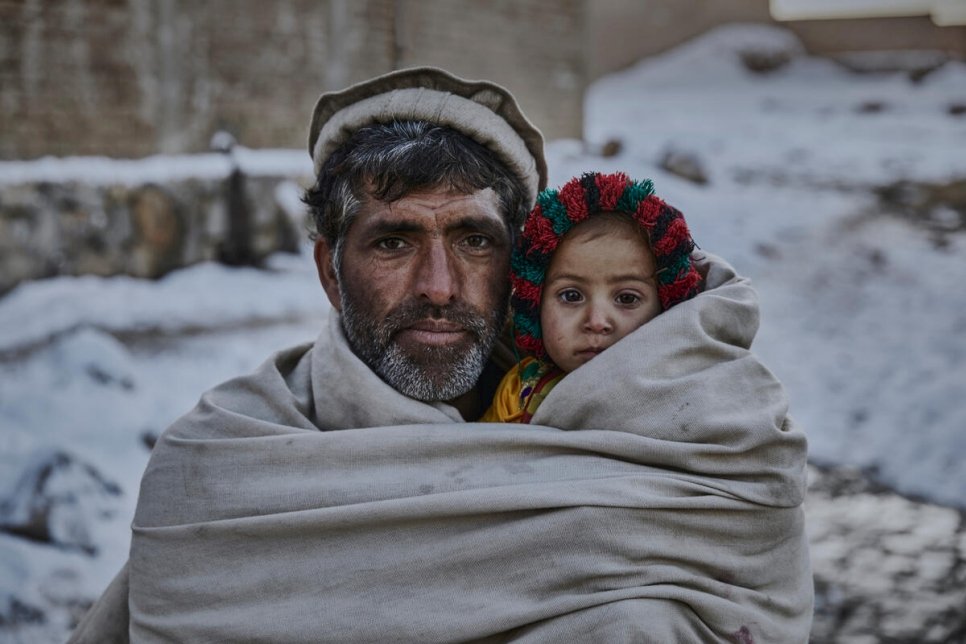Afghanistan emergency
“We had no time to gather anything. We fled with only a blanket.”
– Maryam, 24, internally displaced Afghan woman in Mazar-e Sharif
Half of Afghanistan's population experiences acute hunger. Some 3.4 million people are displaced due to conflict, and many children are out of school. The health care system is collapsing, fundamental rights of women and girls are under threat, farmers and herders are struggling amidst the climate crisis, and the economy is in free fall.
Conflict has subsided, but violence, fear, and deprivation continue to send Afghans across borders, particularly in Iran and Pakistan.
Afghanistan is experiencing a humanitarian and displacement crisis.
More than 700,000 Afghans were newly displaced inside the country in 2021, 80 per cent of whom are women and children. This comes on top of recurrent natural disasters including drought and earthquake damage and the COVID-19 pandemic with its far-reaching health impacts and socio-economic repercussions.
Afghans already constitute one of the largest refugee populations worldwide. Some three-quarters of Afghan refugees are hosted in Iran and Pakistan, with more than 2.2 million registered refugees in the two countries.
Afghanistan’s children are growing up amid this crisis. Some 65 per cent of the Afghan people are children and youth, anxious about their future in the face of insecurity and economic challenges.
What is UNHCR doing to help?
UNHCR is committed to staying and delivering in Afghanistan. We have activated our emergency response to protect the most vulnerable and assist Afghans with life-saving shelter, support to insulate and warm homes, water and health facilities, core relief items, and psycho-social support both within Afghanistan and neighbouring countries.
Amid winter, UNHCR has significantly intensified its outreach with targeted assistance helping families to survive. Critical aid includes household items like blankets, stoves, solar lanterns, insulation kits and support for heating, clothing, and vital household supplies.
Preventing the spread of COVID-19 also remains a priority. To help reduce the risk as much as possible, UNHCR is providing buckets and jerry cans in its relief kits to displaced families. These supplies are especially important in areas where access to clean water is difficult. UNHCR has also established hand-washing stations and distributes hygiene kits including soap and face masks.
More humanitarian aid is urgently needed. We are ramping up our response, and we need support to protect and assist people forced to flee.
Afghanistan’s needs amount to over US $8 billion in funding this year.
The humanitarian plan for responding inside Afghanistan requires US $4.44 billion, the largest humanitarian appeal ever launched for a country. Furthermore, under the Transitional Engagement Framework, the UN requires an additional US $3.6 billion to sustain essential social services, support community systems, and maintain services, particularly for women and girls.
These plans will ramp up delivery of life-saving food and agriculture support, health services, nutrition, emergency shelter, water and sanitation, protection, emergency education and other infrastructure and community programming.
The regional refugee response plan requires a further US $623 million for 40 organizations working in protection, health and nutrition, food security, shelter, household items, water and sanitation, livelihoods and resilience, education and logistics. UNHCR’s requirements within this appeal are US $263 million.
To find the latest figures, please visit our Data Portal. You can also read the latest external updates on our Global Focus page.

